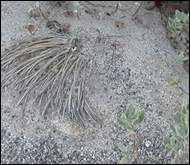
Why embodiment studies here and now? > It draws on new science to reinvigorate traditional concerns of the humanities. > It is timely the number of web mentions of embodiment or embodiment studies has increased about 10-fold within the last year and a half. > It could be a way to reframe queer studies, disability studies, and women's studies, so that they are less isolated from each other and from mainstream interests. > It would support defense of the environment, which is urgent. > No one else is doing it in the comprehensive manner proposed (but compare Reading, below). > It implies a knowing-being-doing pedagogy, and requires one.
> Many of our present students say they need it and are excited about it.
Compare: Representation and the Body: an Interdisciplinary M.A. Programme in Critical Theory at the University of Reading (UK) Research Methods Module
Core Module in Critical Theory
Plus two out of four Modules :
|
A context where they don't have to deal with the old ways. - LW
Institutional design
Conceptual development
We have some very able and creative students, and I have wanted to involve them, along with faculty, in developing embodiment studies. The semester magazine, web worksite, and embodiment studies colloquia have been designed with this hope.
Institutional fit
Highly compatible with Dewey, lends itself easily to integration of knowing, being and doing.
-how it relates to the IMA program
Embodiment is a meta-subject - that is, it is an approach to almost any subject area - so it is naturally interdisciplinary and integrational, potentially a broad platform that could integrate other study areas in one large view. This makes it an excellent basis for an interdisciplinary and individualized program.
-to the degree
Embodiment studies is good at the MA level because at this level students have already got a body of interests and capacities they can be excited to reframe in embodiment terms.
What will make Goddard unique in embodiment studies will be just what makes Goddard unique in any other area - that we embody embodiment, because we try for knowing-being-doing in an individualized and integrative way.
Things to be alert about:
1. 'The body' as an academic topic has conventionally been associated with discussions of sexuality, disease, and social exclusion. Many of the students drawn to embodiment studies are attracted to these questions, but embodiment studies at Goddard shouldn't allow itself to be defined by these interests. Embodiment studies is capable of reframing these discourses, but it is also capable of reframing discussions of rationality, literary excellence, and much else. Suggestion: keep emphasizing the wider scope of the project.
3. It's important to keep flexibility in defining 'embodiment.' If we are forming a study area from the bottom up rather than from the top down, we don't want to rush to define it before a bunch of people have had a chance to think about it. At the same time we shouldn't come across as sloppy. Suggestion: philosophical oversight. Keep making clear statements of the possible meanings of 'embodiment,' and locating student insights and theses within that spectrum.
4. Border tensions with cultural studies, consciousness studies, possibly environment studies. Because embodiment is a viewpoint shift that is inherently multidisciplinary, there will be a lot of overlap between embodiment and other concentrations. Suggestion: emphasize that embodiment studies is a wide umbrella, and that students can for instance do consciousness studies in an embodiment studies way.
5. Some students will have a hard time grasping and accepting difficult implications of embodiment studies, for example in relation to mortality. Suggestion: we do not have to solve these difficulties, just acknowledge them.
6. Embodiment studies is new and exciting, but the excitement will die out of it if we start institutionalizing it in safe and dull ways. Suggestion: to keep it hot I think we have to welcome student tensions (uncertainty and dissent) and keep the way we administer it lively and creative.
Marketing
> strengths
Embodiment studies at Goddard has the advantage of being able to handle being and doing components, without which any embodiment studies program would be inconsistent.
To my knowledge there are no other schools with comprehensive embodiment studies programs of the sort envisaged here.
Our existing strengths as a program are the wisdom and flexibility of our faculty, our appeal to people with established lives, our progressive commitment, and our unusually woman-friendly and gay-friendly ethos. While embodiment studies is open to any gender, my guess is that women who are dissatisfied with the implicit anti-embodiment bias in other institutions would be our largest market.
> principles:
- publicize student work
- publicize faculty qualities
- publicize the intimate effective nature of student-faculty exchange and the excitement and warmth of the residencies
- emphasize uniqueness of integrated embodiment studies
- emphasize the chance to help create a program from the ground up
- publicize faculty qualities
> creative means:
Publish student-faculty correspondence on embodiment topics
Encourage off-side web nodes that is, encourage individual faculty members and students to post their own websites locatable through keywords such as embodiment, body studies, being bodies, cultural bodies, etc. These sites could have many kinds of material - body stories, notes, pictures, correspondence - along with a box that has information about the program (cost, how to apply) with links to Goddard site.
Web-publish graduating projects, always with embodiment-studies keywords and contact information.
Personal ripples: ask faculty and students to refer hand-picked people to these websites, and ask these people to refer other hand-picked people.
Ask potential students for stories, bibliographies and link-lists to be posted to central or node sites.